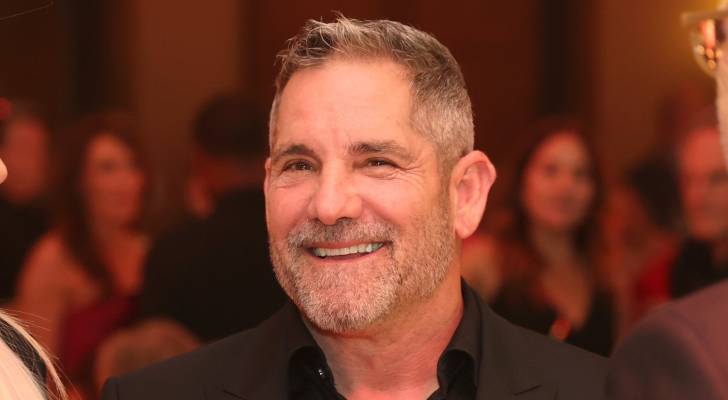
Despite their multimillion-dollar salary packages, professional athletes often face financial struggles after they leave the field. That’s according to real estate mogul Grant Cardone, who recently posted a video on YouTube explaining why.
“Many ball players go broke after they retire, not because they retired but because they didn’t plan for their retirement that you knew was going to happen anyway,” says the 66-year-old entrepreneur and investor, — “And they spend a bunch of money on bulls–t.”
According to Craig Brown, a partner at NKSFB Sports Business Division, an astonishing 78% of professional athletes face bankruptcy within just three years of retiring.
In one famous example, NBA basketball legend Allen Iverson reportedly filed for bankruptcy in 2012 after lavishly splurging on jewellery and luxury gifts for friends, according to Style magazine, illustrating Cardone’s argument about reckless spending habits.
Unfortunately, the temptation to stretch budgets and go into debt isn’t limited to multimillionaire athletes. Here’s how ordinary North American families are falling into a similar trap.
Avoid the growing debt trap
One way to get caught with nothing is to ignore the need to moderate spending once you are near or in retirement. For instance, if a family is accustomed to spending a lot on indulgences but doesn’t adjust this spending to accommodate the rise in prices or a decrease in income, then they’ll probably end up relying on debt. This can be a big problem when it comes time to retire.
According to TransUnion, more Canadians borrowed and used credit in the third quarter of 2024. This reliance on credit pushed the total consumer credit debt to CAD$2.5 trillion by the end of last year. This is a big problem — so big that even the Bank of Canada recognizes the problem in its monetary statements, stating that half of Canadians carry a credit card balance for at least two consecutive months.
When you combine this reliance on debt with the current risk of financial setbacks — either through investment losses or loss of employment — and the average family is far more exposed to financial shocks and the potential to go broke.
With this in mind, Cardone says he sets a strict guardrail on unnecessary and recreational expenses. Here’s how his model works.
Passive income only
“I buy bulls–t from passive income only,” Cardone explains in the video.
Fortunately, his extensive portfolio of real estate investments gives him plenty of flexibility. At this point in time, he claims to own 7,000 apartment rental units. Just one of these 250-unit properties provides Cardone with an annual revenue of approximately USD$6.6 million.
The cash-flow from this one investment is what Cardone uses for his consumer spending indulgences.
“How stupid can you go? You can go as stupid as your cash flow,” he says.
A similar framework could ring-fence your personal finances, too. Reducing consumer debt and accumulating a six-month emergency fund could be the first steps. Meanwhile, a tight budget for active income can help you manage necessary expenses such as groceries, rent and transportation.
Investing excess cash flow in assets that generate passive income could give you room to indulge.
For example, dividend stocks or divident exchange-traded funds (ETFs), can provide monthly, quarterly or annual passive income. For instance, BMO Canadian Dividend (ZDV.TO) provides exposure to a diversified portfolio of Canadian dividend-paying stocks with sustainable, consistent payouts. ZDV.TO offers an annualized distribution yield of 3.72%. Investing CAD$10,000 in this ETF would provide about CAD$450 in annual passive income, which you could either re-invest or spend on gifts for family members or a short weekend getaway.
Cardone’s approach prioritizes necessary expenses and puts a firm limit on temptations, which is a pragmatic way to achieve financial security.
Sources
1. YouTube: Why MOST Ball Players go BROKE (March 18, 2022)
2. Fox Business: Why do professional athletes go broke? (Feb 2, 2022)
3. Style: How NBA basketball legend Allen Iverson rebuilt his fortune: he blew US$200 million on jewellery, nights out, Bentleys, Lamborghinis and Maybachs – but has turned things around thanks to Reebok By Gloria Fung (May 20, 2024)
4. TransUnion: Canadian Credit Market Set to Grow in 2025 Amid Expected Lower Cost of Living and Interest Rates (Nov 26, 2024)
5. Bank of Canada: The reliance of Canadians on credit card debt as a predictor of financial stress (July 2024)
This article Grant Cardone says this is the 1 big reason pro athletes go broke when they retire — says he makes USD$6.6M/year in passive income with a tiny portion of his portfolio. Here’s how originally appeared on Money.ca
This article provides information only and should not be construed as advice. It is provided without warranty of any kind.